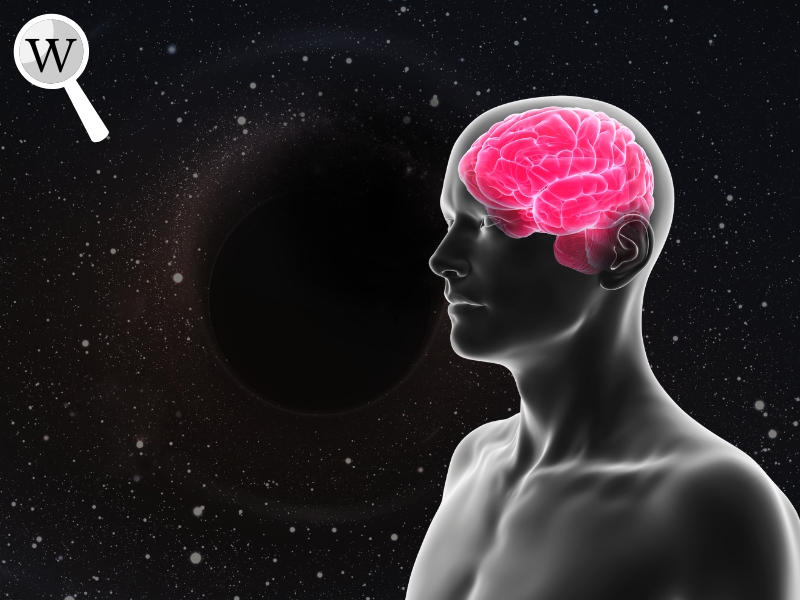
If someone asked you, “what is the biggest number in the world?” you’d probably say infinity.
But here’s the twist—infinity isn’t a number. It’s a concept. A direction. A way to describe something that never ends. So, if infinity is out of the picture, then what is the biggest number ever used or even imagined by humans? Let me take you on a wild ride through the realms of mind-bending numerical science and into the heart of one of the largest numbers ever conceived: Graham’s number.
Table of Contents
What Is Graham’s Number?

This mind-blowing figure is so gigantic that even if you filled the entire observable universe with digits, it wouldn’t be enough to write it all down. Seriously.
It’s not a number like a million, a billion, or even a googol (that’s 1 followed by 100 zeros). It’s not even like a googolplex (which is 1 followed by a googol zeros). This number dwarfs all of them—and does so without breaking a sweat.
This colossal number was introduced by mathematician Ronald G. in a mathematical problem from Ramsey theory, a field that explores how chaos can’t persist indefinitely and order will eventually emerge. Sounds poetic? Wait until you see the size of the number.
So, what is the biggest number used in an actual mathematical proof? You guessed it: this number.
The Story Behind the Monster
Back in the 1970s, Ronald Graham was working on a problem involving hypercubes—imagine a cube, but in dimensions beyond the three we know. He needed to set an upper bound for a certain situation involving colorings of the edges of a high-dimensional hypercube, and the number he came up with was so enormous that it gained fame.
Even though later work reduced the bound significantly, the original Graham’s number stuck. Why? Because of how unfathomably huge it is.
Not Your Average Notation
Here’s where things get wild. You can’t write Graham’s number with regular exponential notation. You need something called Knuth’s up-arrow notation, invented by Donald Knuth to handle numbers that are way, way bigger than anything conventional.
Let’s build up to it:
- 3^3 = 27 (basic exponent)
- 3^^3 = 3^(3^3) = 3^27 = 7,625,597,484,987 (double arrow)
- 3^^^3 is already far beyond what you can comprehend
Graham’s number begins with:
G1 = 3 ↑↑↑↑ 3
And it doesn’t stop there.
It goes:
G2 = 3 ↑^{G1} 3, then G3 = 3 ↑^{G2} 3 … and so on.
You repeat this 64 times, meaning:
Graham’s number = G64, where each G is defined recursively with the previous one embedded in the up-arrow notation.
Just to put this into perspective: the number of digits in G1 is more than the number of atoms in the observable universe. And that’s just the first step.
Why Not Infinity?

You might be wondering, why not just say “infinity” and be done with it? Because infinity isn’t tangible. It can’t be used in proofs. It doesn’t represent a real value. Graham’s number, despite being incomprehensibly big, is still finite—and it was actually used in a legitimate mathematical proof.
That’s what makes it so special.
So when someone wonders what is the biggest number in the world, Graham’s number is a thrilling contender. It’s not just big—it’s astronomically, cosmically, explosively massive.
Can the Human Brain Even Imagine It?

Absolutely not.
You and I can barely comprehend a googol, let alone a googolplex. Now imagine a number that makes a googolplex look like an ant standing next to Mount Everest. That’s the level we’re talking about.
In fact, if you tried to write this immense number in decimal form, the universe would run out of particles before you could finish. And even if you tried to compress it using every computer on Earth, it wouldn’t help.
The first few digits of this gigantic figure are known, by the way:
And that’s about all that fits.
Yes, we know the last few digits too (due to how modular arithmetic works), but the middle? That’s a digital void we can’t touch.
And here’s the kicker: just thinking about this astronomical number for too long might feel like you’re creating a black hole in your brain. It’s that overwhelming. It’s that beyond comprehension. This isn’t just mathematics—it’s a test of the limits of human imagination.
Who Is Graham?

Ronald Graham was not just the man behind Graham’s number. He was one of the most respected mathematicians of the 20th century, a pioneer in combinatorics, and someone whose curiosity led him to explore the frontiers of mathematical thought.
Born in 1935, He worked at AT&T Bell Labs and later became the Chief Scientist at the California Institute for Telecommunications and Information Technology. But among mathematicians, he’s best known for his deep contributions to Ramsey theory, number theory, and discrete mathematics.
He had a close friendship with famed mathematician Paul Erdős and was even a master of juggling—yes, literally. He could juggle five balls while explaining complex mathematical ideas, blending logic and entertainment in a way few could.
But perhaps his most unforgettable legacy is Graham’s number, which even made it into the Guinness Book of World Records as the largest number ever used in a serious mathematical proof.
He passed away in 2020, but his influence—and his giant number—live on.
For more informations chck this article from Wikipedia.
Watch It: Graham’s Number Explained in Under 60 Seconds
Still trying to wrap your head around Graham’s number? Don’t worry—sometimes a visual explanation helps more than thousands of words. I’ve created a short video to summarize this mind-blowing concept in a fun and engaging way.
vs Other Giants
Let’s compare:
- Million = 10^6
- Billion = 10^9
- Googol = 10^100
- Googolplex = 10^(10^100)
- Graham’s number = beyond comprehension
There are even bigger numbers in theory, like TREE(3), which is mind-numbingly larger than Graham’s number, but they’re used in different types of problems and contexts.
So is Graham’s number the biggest number in the world? Not technically. But in terms of fame, use in proofs, and sheer scale, it’s the most legendary.
Why People Love (and Fear) It
This colossal figure is like the black hole of numbers. It’s beautiful, terrifying, and incomprehensible. Mathematicians and number lovers are drawn to it because it pushes the boundaries of imagination.
When you think about how vast the universe is, and then realize this number can’t even fit inside it, you get a sense of the sublime. It’s not just math—it’s philosophy, it’s art, it’s a glimpse into something we’re not equipped to fully grasp.
And yet, it’s real. It’s not science fiction. It was published in an academic paper. That’s what makes it magical.
Final Thoughts
If you’re still asking, “what is the biggest number in the world?”—now you know the answer is not infinity, and it’s not even googolplex.
It’s a number so large, you can’t hold it in your head, not even for a second. This figure isn’t just big. It’s in a class of its own. And while it might not be the mathematically biggest number ever theorized, it’s certainly the most famous among the unimaginably large.
So the next time someone throws out infinity as an answer, you can smile and say: “Actually, let me tell you about this number.“







